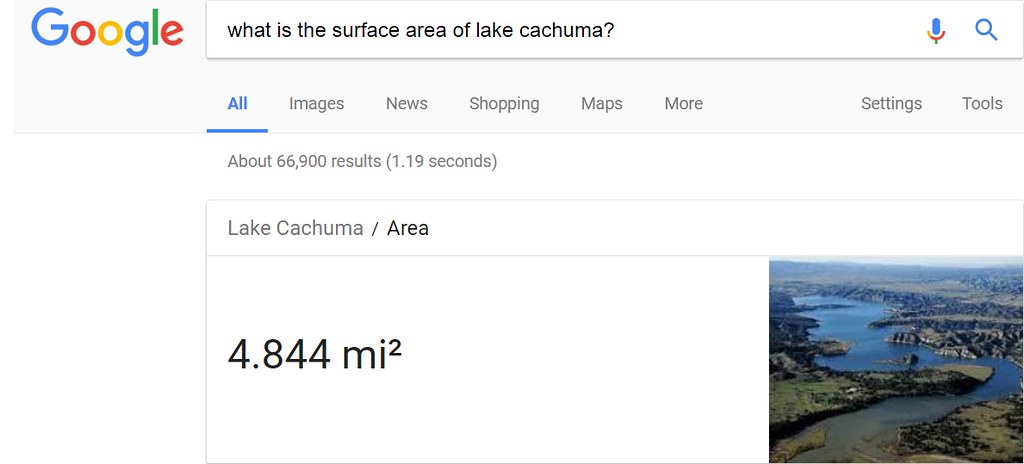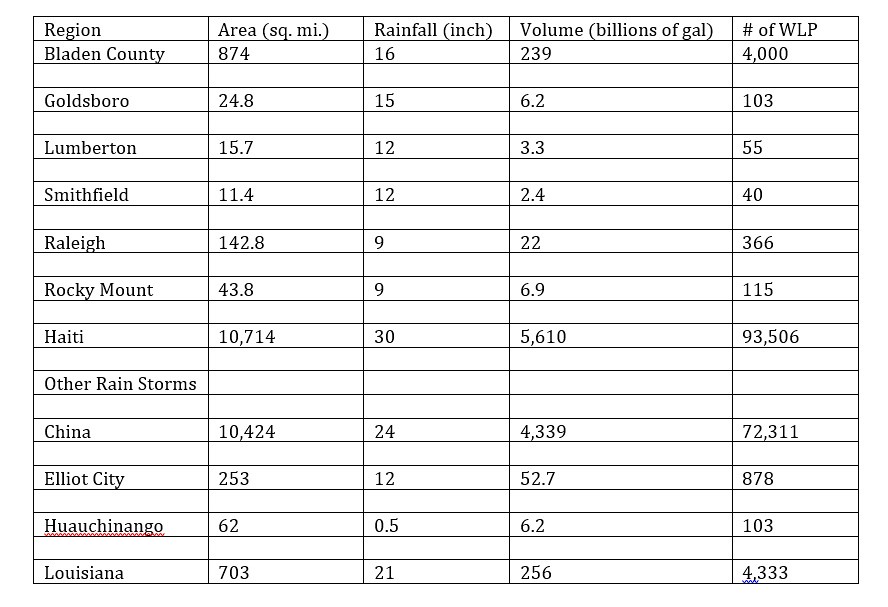In a recent article in the "Los Angeles Times" titled "The verdict after all that rain? Most of California is out of the drought" the author reports a few spots in California where record rainfall has hit. Specifically, in Southern California near Santa Barbara is Lake Cachuma. The article states:
Parts of Santa Barbara and Ventura counties are still officially listed as being in serious drought. But the recent storms would appear to have taken care of that. Cachuma Lake in the Santa Ynez Valley rose 31 feet during the rains, as the dramatic time-lapse video above shows.
The article in the 'Times' also contained an embedded video showing the rising water in Lake Cachuma via a time lapse video shown below:
After the weekend storm....shown below:
Wow! That is a difference in water level. I immediately started wondering the following question:
How much water is contained in 31 feet of depth in Lake Cachuma?
To start the calculation, the surface area of Lake Cachuma needs to be obtained. If the following question is entered into a search engine: "What is the surface area of Lake Cachuma?" -- the following result appears below:
According to google, the surface area of Lake Cachuma is 4.844 square miles. To obtain the amount of water contained in 31 feet (of depth) of water, an expression is needed for the volume. The expression below for volume depends on two parameters: surface area and height:
The height of rainfall over a weekend was reported to be 31 feet in total. In order to calculate a volume, the units need to be uniform. Above, the surface area is given in units of 'square miles' whereas the height of rainfall was reported in units of 'feet'. Either a conversion is needed from 'feet' to 'square miles' or from 'square miles' to 'feet'. Since the topic of interest is the volume of rainfall, the units 'feet' might be more palatable.
Calculating the square feet from the square miles requires a conversion factor. Again, if Google.com is consulted with the following question: "How many square feet are in a square mile?" -- the following result shown below appears:
Now that the conversion factor is known for the conversion of square miles to square feet, the calculation is straightforward as shown below:
There are just over 135,100,000 square feet in 4.844 square miles. With the units of the two parameters now expressed in 'feet', the expression for the volume can now be used as shown below:
The total volume of rain contained in 31 feet (depth) of rainfall dropping on Lake Cachuma is 4.2 billion cubic feet. When I look at the total volume of rainfall expressed in units of 'cubic feet' -- I find difficulty in interpreting the total volume. Therefore, I like to see the value expressed in units of 'gallons' as shown below:
Now the number is making sense to me. The total rainfall in 31 feet of rain (depth) filling up Lake Cachuma over a weekend is equivalent to 560,000,000 gallons.
Obviously, this volume appears to be a huge amount and it is. Although, to compare this volume to others volumes of rainfall last year, you would have to read my post. Just Kidding!! In that post, there is a table of reported rainfall volumes which is shown below:
Upon inspecting the values of rainfall from storms last year, the current amount might seem negligible. Although, if the surface area of the land upon which the rain fell is taken into account, the amount of rain that Lake Cachuma received in a single weekend is quite substantial.
560 million gallons might not be something to write home about in relation to the 11 trillion of gallons needed to catch up with the California drought. But, it is a start. Each season, southern California is catching up which is nice and much needed. Although, sitting inside during rainfall over weekends is unusual for Californians' to experience. We are naturally attracted toward great weather and the sun. Enough with the complaints.
Until next time, have a great day!









No comments:
Post a Comment